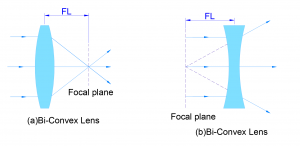The world of photography and videography has been revolutionized by the intricate components within camera lenses. Beyond being a mere accessory, lenses are the gateway to capturing stunning visuals. In this article, we delve into the essential optical characteristics of lenses, unraveling the complexities that shape the art and science of selecting the right lens for the job.
At the heart of every camera and television, optical lenses are meticulously crafted assemblies of convex and concave lenses accompanied by precision metal components. In the contemporary landscape, camera lenses have evolved to include features like automatic aperture and electric zoom, elevating their functionality and versatility.
The fundamental role of an optical lens is to project the image of an object onto the camera’s sensitive element, marking it as the portal of the camera. The optical properties that define a lens are rooted in its structural composition, specifically its focal length, field of view angle, and relative aperture.
Expressed in millimeters (mm), the focal length is the distance from the lens’s optical center to the image sensor. It serves as a pivotal characteristic, distinguishing lenses into two primary categories: Prime Lenses and Zoom Lenses. Prime lenses offer a fixed focal length tailored for specific photography types, while zoom lenses provide variable focal lengths, affording photographers flexibility in composition.

The diaphragm or aperture controls the amount of light entering the lens, influencing exposure and image sharpness. Represented by f-number, a lower value indicates a larger aperture, allowing more light. Cameras offer adjustable aperture settings, and the maximum aperture, denoted in lens names, impacts performance in low-light conditions.
The lens’s aperture directly shapes the depth of field, dictating the spatial relationships within an image. A wider aperture results in a shallow depth of field, ideal for emphasizing a subject against a soft background. Conversely, a smaller aperture produces a deep depth of field, capturing details across the entire frame.
Navigating the world of lenses involves understanding the interplay of these optical characteristics. Whether you are a seasoned photographer or a budding enthusiast, the right combination of lenses and settings opens the door to a world of creative possibilities. Remember, the investment in high-quality lenses is a commitment to superior image quality, ensuring your visuals stand out amidst the myriad of photographic endeavors. Embrace the art and science of lens selection to capture the world through a lens that suits your vision.
Do not hesitate to contact Shanghai Optics today. We’d be more than happy to discuss your projects and how best they can become a success.